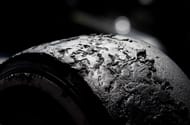Lewis Hamilton of Great Britain and Mercedes GP has a left rear tyre failure during the British Formula One Grand Prix at Silverstone Circuit
Pirelli came under heavy criticism from the whole paddock for the spectacular tyre failures experienced during the race at Silverstone. Some of them were so dangerous that even the drivers around those with the tyre blowouts were in danger of having huge and potentially life-threatening accidents. But instead of cursing Pirelli- they have had their quota- let’s try and understand what could be the potential reasons behind those four left rear tyre failures:-
Heavy loading
Firstly, as a matter of fact, the left rear is the most heavily loaded tyre around Silverstone due to the high-speed right handed corners putting heavy loads on those black things. Continuing along those lines, Silverstone is one of those killer circuits for the tyres and throughout the lap the tyres face heavy G-forces. Combine that with the softer sidewalls the Pirelli tyres have this year to provide more performance and we have a recipe for disaster right there. What we saw during the race was the tread along with the belt breaking off the sidewalls which shows that the joint between the tread and the sidewall couldn’t tolerate the load.
But why did the tyres completely fail when just three races earlier on an equally high-speed corner track in Barcelona, we only saw delaminations? Heavy loads couldn’t be the complete reason.
New “Glue” solution
After the furore over the tyre problems during the Spanish GP, Pirelli wanted to go back to Kevlar belts instead of the current steel ones but not finding unanimous support, announced that they would introduce a new “glue” to attach the thread to the belt in a better way thus preventing the previously seen delaminations.
The downside of that was when previously it was possible for the tread to separate from the belt in extreme situations, now it was not. That could have been another reason behind the failures- the tread taking the belt along with it and as a result the tyre failing completely.
Kerbs and Oscillations
Immediately after the end of the race, the common view was that the kerb at Turn 4 was the culprit, which was damaged and had a sharp step as a result. As an afterthought, it seems to be one of the less probable reasons because two of the four failures occurred down the Hangar straight immediately after the heavily-loaded Maggots and Becketts corners. Did the tyres take almost half a lap to fall apart after sustaining damage from the kerb? Improbable.
So we can totally eliminate this possibility? Maybe it will be better to learn about a similar case nine years ago at the Spa-Francorchamps circuit and then make a decision.
There were many striking similarities between then and now. Both Michelin(then) and Pirelli(now) had supplied steel-belt tyres. Both tracks have some very high speed corners. Both had a kerb with a small step on the inside. In 2004, Michelin put the matter to bed by blaming the kerb behind the multiple failures during that race.
But what actually happens when the tyres hit such a damaged kerb? Oscillations are induced into them after running over the kerbs. To be more precise standing waves are generated which can sometimes produce stresses beyond which the design permits. Infact, these standing waves were the reason behind Michelin runners suffering heavily on the long banked curve at Indianapolis back in 2005 and boycotting the race purely for safety reasons- a separate case altogether but having some similarities.
Another interesting point is that Kevlar has much better damping properties than steel, so if a Kevlar belt would have been present the oscillations would not have reached alarming proportions. Remember we didn’t see any such problems in Silverstone last year when the situation was quite similar with a wet Friday and a sunny Sunday. Why this weather pattern needs to be discussed? Because the teams didn’t have enough dry long running data either last year or this year, so lack of data can be ruled out as a potential cause.
Minimum pressure specifications
Pirelli always specify a minimum pressure that must be maintained inside the tyres (generally 18 psi) for higher longevity and prevent damage from the kerbs. But teams rarely obey that and to gain more performance reduce the pressures so as to increase the contact patch and hence the grip. On these lines, it is important to note that neither Lotus nor Force India experienced any problems with the tyres during the race. They later announced that they had stuck to Pirelli’s specification while some of their rivals had to later increase the pressures by 2 psi to prevent their tyres from failing.
The failure on Perez’s car during the dying laps puts a question mark on that. The other three had occurred during the first third of the race and most teams had taken the precautionary measure of increasing the pressures immediately after that. So did McLaren not change their pressures? Or did the failure occur even after that?
This and many other questions remain unanswered. With Pirelli summoned to the Sporting Working Group meeting this week, the haze might clear a little. But the threat of a boycott for the next race looms large and with just 4 days to free practice on Friday there is very less Pirelli can do to stop it. Will we see another USA 2005? At least fans wouldn’t feel cheated this time around, seeing that the drivers’ lives are being put in danger.

